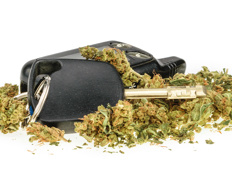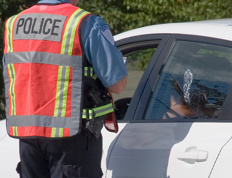The sharing economy makes it possible for people to earn extra income by providing certain services, such as becoming an “authorized driver” for digital platforms like Uber or Eva. But what about insurance if there’s an accident?
Establishing risks first
Your auto insurance policy is designed to cover activities you do with your vehicle in your private life. Your premium is based on certain criteria, such as your annual mileage, your region, your driving experience and your personal use of your vehicle.
If you choose to use your vehicle as passenger transport to earn extra income, the risk of an accident could increase, because of the number of kilometres you drive or because you’ll be behind the wheel more often, for example.
For this reason, it’s important to declare to your insurer your intention to undertake such commercial activities with your personal vehicle. Your coverage can then be adjusted to properly protect you in the event of a loss.
Not planning on declaring it? In the event of a claim, you may be compensated only partially—or not at all.
Paid passenger transport: what you need to know
As an authorized driver for a platform like Uber or Eva, you’re responsible for having adequate personal auto insurance for your vehicle. This means you must purchase automobile insurance that factors in the risks related to both your remunerated activities and your personal use.
For example, if you have an accident while working, Uber’s insurance will cover material damage to your vehicle as long as your personal policy has such coverage. It is this the car-sharing company’s insurer that compensates the owners of damaged vehicles based on the coverage and deductible the owners have chosen for their personal policy. This is a crucial distinction.
In the event of an accident during a ride, you’re covered by Uber’s commercial policy, which includes the following:
- Civil liability coverage for passenger transport
- Collision and upset coverage, and coverage for all risks other than collisions and upsets, travel expenses and replacement cost coverage, provided that your personal auto insurance policy has these types of coverage
A few examples
- You’ve had a collision for which you are responsible. You’ve purchased collision coverage on your personal policy with a $500 deductible. The platform’s insurer will cover all the damage you incurred, but you’ll have to pay your $500 deductible.
- Your vehicle is stolen while you’re working, but you don’t have coverage for auto theft. In such a case, you won’t be compensated because your vehicle isn’t insured for theft.
- You don’t have replacement cost coverage because your vehicle is too old. Uber’s insurance will pay compensation but will consider your vehicle’s depreciation, i.e., the value of your car at the time of the claim.
Uber or Eva’s insurance will cover the damage if you have an accident while working, but in accordance with your auto insurance.
As an authorized driver, you must purchase automobile insurance that meets your needs both for your personal use and income-generating activities.
About delivery
Watch out!
The Act respecting remunerated passenger transportation and Endorsement 48 don’t govern the delivery of goods or meals. Platforms like Uber or Eva are therefore not required to cover these activities. If you decide to deliver goods or meals, you must inform your insurer to ensure that you are covered while you perform such income-generating activities.
Your Claims History Statement
What happens if you’re involved in a fender bender or collision while working? Uber’s insurer to which the accident is reported is required to log the event in your Claims History Statement in the Fichier central des sinistres automobiles (FCSA).
This database, used by insurers to establish your premium, includes all the claims that you were involved in, both in your personal and professional life.
Public transportation platforms and auto insurance
The company’s insurance policy applies from the moment a registered driver logs on to the technological means used to dispatch ride requests, such as a mobile application, until the driver logs off.
Since 2019, the Act respecting remunerated passenger transportation by automobile requires companies operating passenger transportation platforms to subscribe to automobile civil liability insurance, including Q.E.F. No. 48.






















